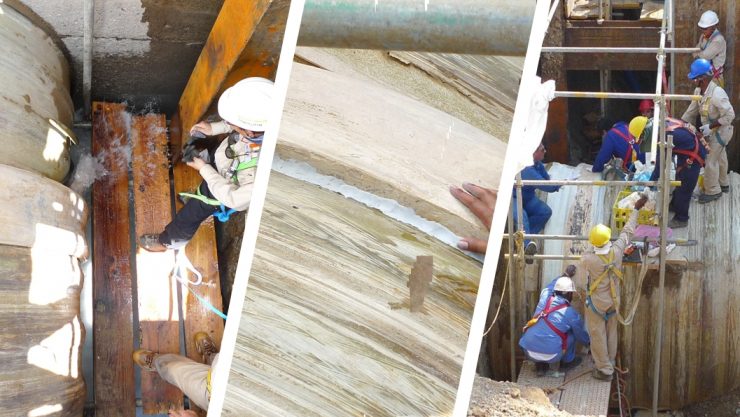Case Study: Desalination Plant Partially Buried 3000mm FRP Discharge Return Pipe Repair
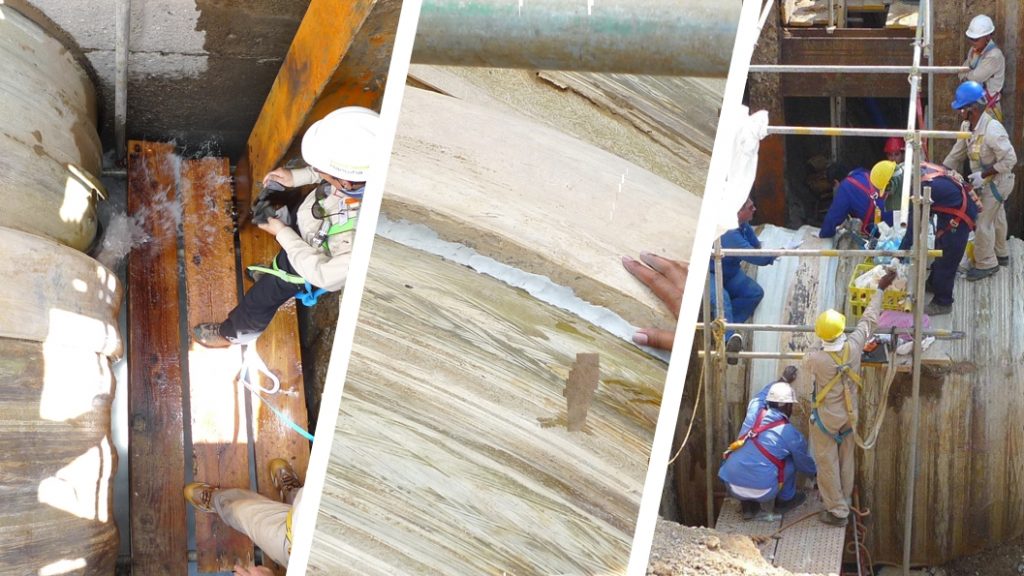
Pipeline in the sand – how a composite patch repair helped seal a partially buried three metre diameter line in Saudi Arabia
Problems during the installation of a three metre diameter FRP discharge pipe at a desalination plant in Saudi Arabia had caused gaps to appear between connecting rings on the line, which had to be sealed in a repair carried out whilst the pipe remained partially buried.
Case Study Data
Site
Desalination plant
Location
Saudi Arabia
Repair Type
Leak repair
Defect
Gaps between rings in a 3000mm FRP discharge return pipe
Products Used
Sylmasta AB Original Epoxy Putty
Epoxy putty used to seal gaps between the ring and the pipe through which water was escaping from a join in the FRP pipe
E190 Brushable Epoxy
Brushable epoxy resin coated onto strips of Fibreglass Tape to create a composite patch repair to reinforce the putty
Fibreglass Tape
Fibreglass Tape soaked with E190, after which it cured to form a rock hard material reinforcing the initial repair
Epoxy Composite Repair Kit
E190 Resin and Fibreglass Tape can be purchased in an Epoxy Composite Repair Kit for making complex patch repairs to pipes and tanks
Case Study PDF
Case Study Details
The three metre diameter FRP (fibreglass reinforced plastic) pipe was to play a crucial role at the plant, returning discharge water not turned into fresh water during the desalination process to the Red Sea.
Problems during the installation of the line meant that one section of the pipe was not connected properly. It was only when the system was fully pressurised and water began escaping that the issue was noticed.
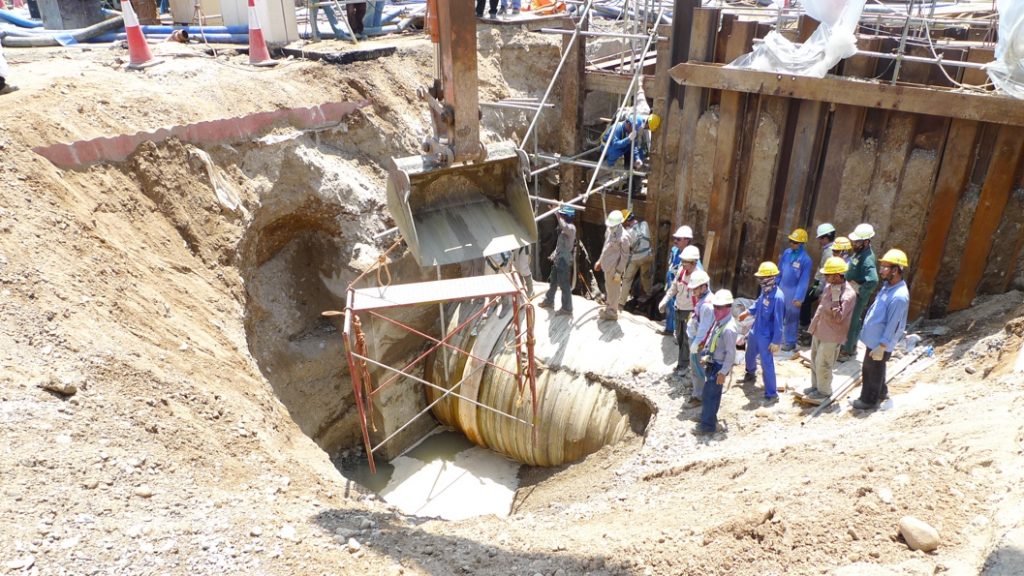
Even though flow was immediately shut off, the amount of water passing through the pipe meant that the chamber housing the problem section became flooded and had to be drained.
Once drained, a scaffold was erected around the pipe and pressure turned back on with minimal flow rate to properly identify what was causing the leak.
It was discovered that gaps had appeared at both ends of a 310mm wide ring connecting sections of the line together. These gaps had to be sealed before the line could be put into service.
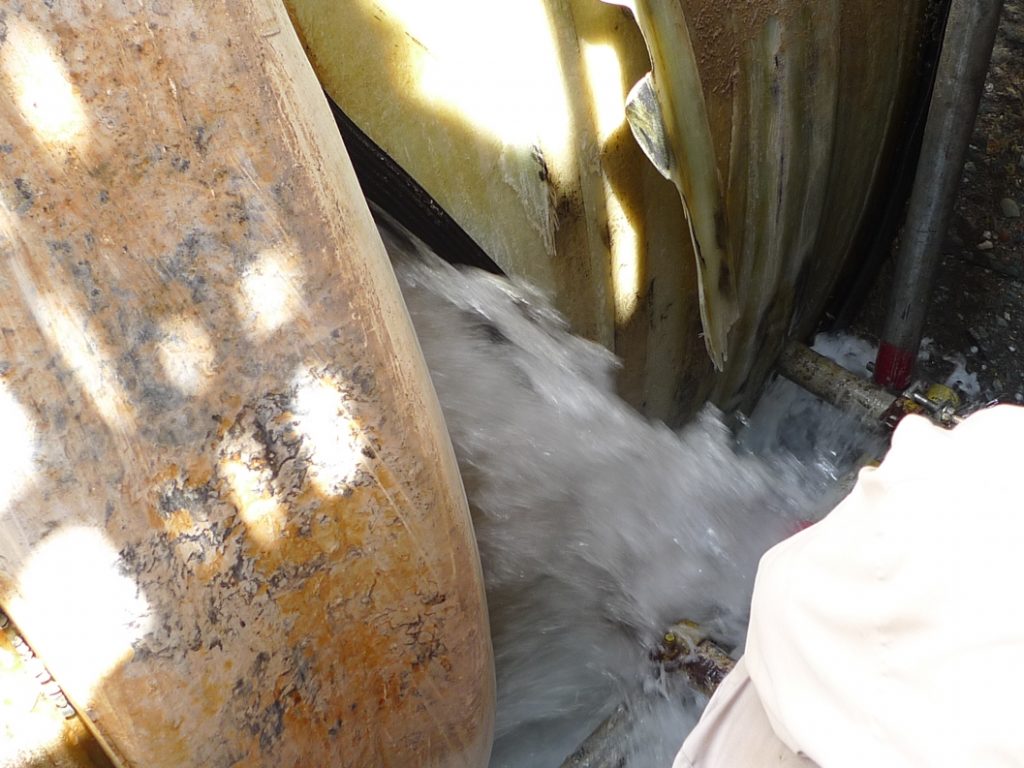
The system was again shut off to enable the repair of the gaps using Sylmasta AB Original Epoxy Putty. After being kneaded by hand, AB Original was pushed into the gaps between the connecting ring and the rest of the pipe and left to harden.
AB Original was chosen as its two hour working time allowed larger quantities of putty to be mixed in one go without the worry of premature curing.
This was a particularly important consideration because of the size of the pipe being repaired and the temperature on-site in Saudi Arabia. Sylmasta recommend AB Original to most clients working in hotter climates.
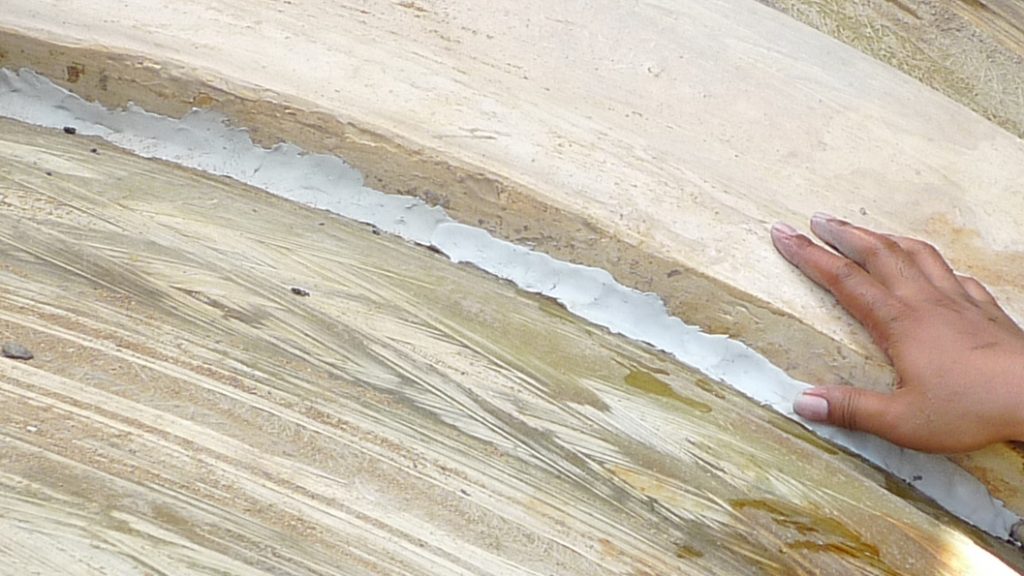
The second stage of repair would normally involve reinforcing the AB Original with a SylWrap HD Pipe Repair Bandage to create a rock hard, impact resistant layer of protection.
However, with the bottom of the FRP pipe remaining buried, it was not possible to wrap SylWrap HD around the line in this application. Even if the line had been completely accessible, its size would have made effective wrapping extremely difficult.
Instead, Sylmasta E190 Brushable Epoxy Resin and Fibreglass Tape were used to build a composite patch repair over the ends of the connecting ring which had been earlier sealed with AB Original.
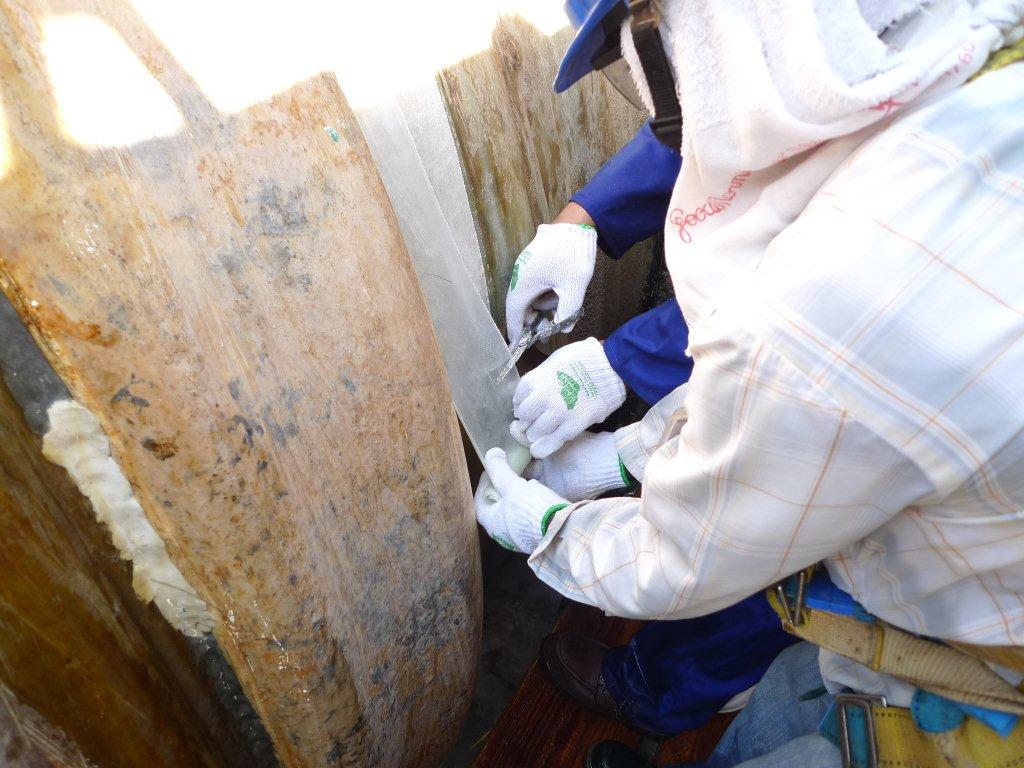
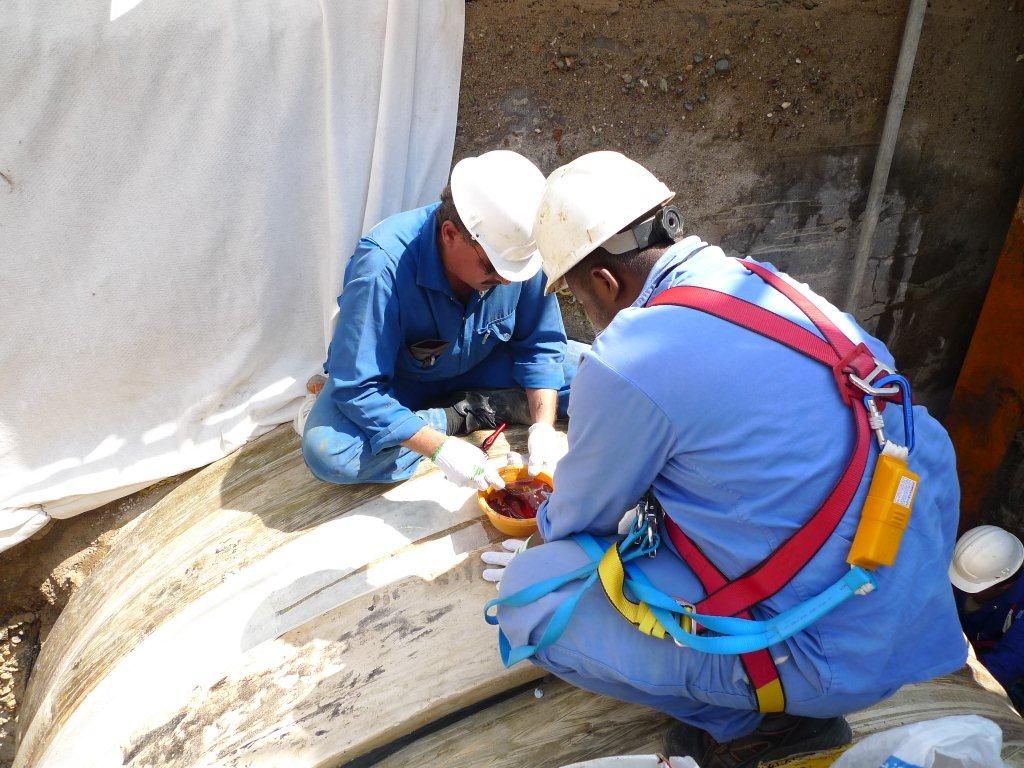
E190 was painted onto the pipe and strips of Fibreglass Tape of the required length cut off and placed over the epoxy. The E190 soaked through the Tape, attaching it to the pipe.
Another coating of E190 was painted over the top of the Fibreglass Tape, with the open weave of the Tape allowing significant amounts of epoxy to saturate the fabric.
The resin-soaked Fibreglass Tape now constituted a composite wrap similar to a SylWrap Bandage, the crucial difference being that it could be layered over areas requiring repair rather than wrapped.
Multiple layers of Fibreglass Tape were applied over each other and soaked with E190. The repair continued in this manner until the last layer of Fibreglass Tape was covered with a final coating of E190 and left to cure.
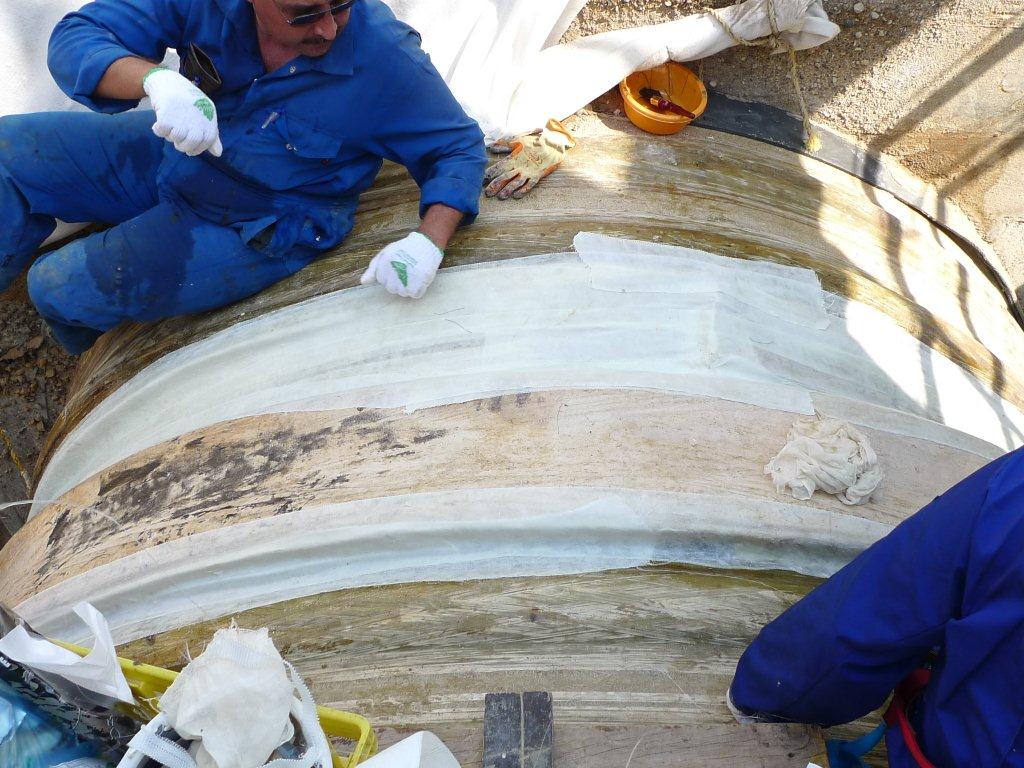
E190 has a work time of 30 minutes and a full cure of 24 hours. The reinforcement of the pipe was completed within 36 hours, after which the line could be returned to service.
Once it had been established that the FRP pipe was no longer leaking and the repair had therefore been a success, the line was buried. It was now ready to serve the desalination plant after construction of the facility was finished.
If you have an application you would like to enquire about, then please get in touch
Call: +44 (0)1444 831 459
Email: sales@sylmasta.com

